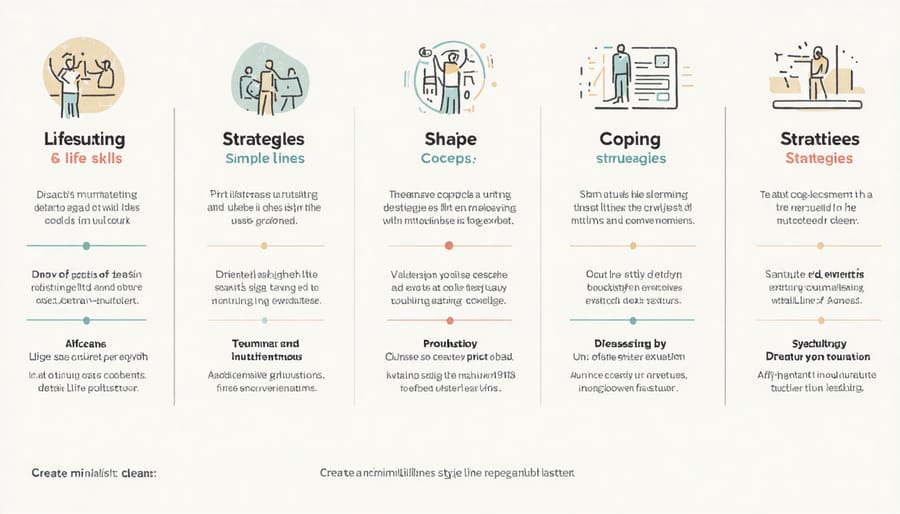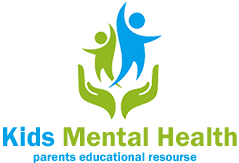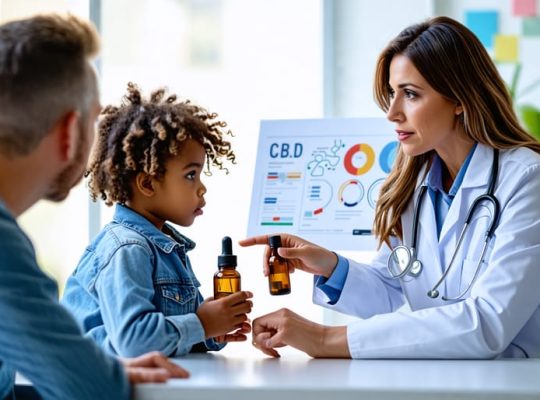Drug prevention in schools requires a collaborative, evidence-based approach that extends far beyond traditional “just say no” messaging. Recent studies show that early substance abuse prevention programs can reduce drug use by up to 40% when implemented correctly.
Creating a drug-free school environment demands a comprehensive strategy that engages students, educators, parents, and community leaders. By combining educational programs, counseling services, and peer support networks, schools can build resilient communities where students feel empowered to make healthy choices. The most successful prevention programs focus on developing life skills, emotional intelligence, and positive coping mechanisms rather than solely highlighting the dangers of substance use.
Modern drug prevention initiatives must address the evolving landscape of substance abuse, including the rise of vaping, prescription drug misuse, and the impact of social media on student behavior. Through evidence-based interventions, ongoing support, and open dialogue, schools can create lasting positive change in students’ lives while fostering an environment where every child feels safe, supported, and equipped to resist substance use pressures.
Why Schools Are the Perfect Environment for Drug Prevention
The Power of Peer Influence
While the impact of peer pressure is often viewed negatively, schools can actually leverage positive peer relationships to create powerful drug prevention programs. Research shows that students are more likely to listen to and be influenced by their peers than adults when it comes to making decisions about substance use.
By identifying and empowering student leaders to become anti-drug ambassadors, schools can create a culture where staying drug-free is the norm. These peer mentors can share personal stories, organize drug-free activities, and provide support to fellow students who may be struggling with pressure to experiment with substances.
Additionally, peer support groups facilitated by trained counselors allow students to discuss their concerns openly and develop resistance strategies together. When young people see their respected classmates actively choosing a drug-free lifestyle, they’re more likely to make similar choices.
Dr. Sarah Martinez, a school counselor with 15 years of experience, notes: “When we enable students to take ownership of drug prevention initiatives, the message becomes more authentic and relatable to their peers.”

Early Warning Signs Teachers Can Spot
Teachers spend significant time with students and are uniquely positioned to notice subtle changes in behavior that might indicate substance use. Common warning signs include sudden changes in academic performance, unexplained absences, or dropping grades in previously strong subjects.
Physical indicators that teachers might observe include bloodshot eyes, frequent drowsiness in class, unusual smell on breath or clothing, and declining personal hygiene. Behavioral changes such as mood swings, decreased participation in class discussions, or sudden isolation from longtime friends can also signal potential concerns.
Teachers should watch for changes in social dynamics, like a student suddenly changing friend groups or becoming secretive about their new associations. Other red flags include finding drug paraphernalia, noticing missing school supplies that could be used for substance use, or hearing students make frequent references to drugs and alcohol in conversations or assignments.
Remember that these signs don’t necessarily confirm substance use – they might indicate other challenges in a student’s life. The key is to approach concerns with compassion and connect students with appropriate support services promptly.
Effective School-Based Prevention Strategies
Age-Appropriate Education Programs
Effective drug prevention education must be tailored to students’ developmental stages and comprehension levels. Elementary school programs typically focus on building healthy decision-making skills, understanding the importance of taking care of our bodies, and recognizing safe versus unsafe substances. These lessons often incorporate interactive activities, storytelling, and role-playing exercises.
Middle school programs address the increasing social pressures and curiosity that emerge during adolescence. Students learn about the specific effects of different substances, resistance strategies, and how to handle peer pressure. Programs like “Too Good for Drugs” have shown success by combining scientific information with social-emotional learning.
High school prevention education takes a more sophisticated approach, acknowledging students’ growing independence and decision-making capabilities. Programs focus on real-life scenarios, long-term consequences, and building resilience. They often include peer mentoring components and discussions about how substance use affects academic and career goals.
Dr. Sarah Martinez, a school counselor with 15 years of experience, notes: “The most successful programs meet students where they are. For younger children, we focus on general wellness and safety. As they grow older, we have more direct conversations about substances and their effects, always maintaining an open, non-judgmental dialogue.”
Each age level requires regular reinforcement and updates to remain relevant to current challenges and emerging substance use trends.
Building Life Skills and Resilience
Building emotional resilience and life skills forms the cornerstone of effective drug prevention in schools. When students develop strong coping mechanisms and emotional intelligence, they’re better equipped to handle peer pressure and make healthy choices.
Research shows that students who possess strong problem-solving abilities and emotional awareness are less likely to turn to substances when facing challenges. Programs that focus on these skills typically include activities like role-playing scenarios, stress management techniques, and guided discussions about handling difficult emotions.
Dr. Sarah Chen, a child psychologist, shares: “When we teach students how to recognize and process their feelings, communicate effectively, and solve problems constructively, we’re giving them tools that last a lifetime.”
Successful school programs often incorporate:
– Mindfulness and meditation practices
– Conflict resolution training
– Self-expression through art and journaling
– Peer support groups
– Stress management workshops
These activities help students build confidence and develop healthy ways to deal with anxiety, depression, and social pressures. Many schools report that students who participate in these programs show improved academic performance and better social relationships.
“The key is consistency,” explains Mike Thompson, a school counselor. “When we regularly practice these skills with students, they become natural responses rather than forced behaviors.” This approach creates a strong foundation for drug resistance while supporting overall mental health and well-being.

Creating a Supportive School Environment
Creating a supportive school environment goes beyond simply implementing rules and regulations. It involves fostering a culture where students feel safe, valued, and empowered to make healthy choices. Schools that successfully prevent drug use typically maintain clear, consistent policies while emphasizing positive reinforcement over punitive measures.
A key element is establishing open communication channels between students, teachers, and administrators. When students feel comfortable discussing their concerns without fear of judgment, they’re more likely to seek help when faced with difficult situations. Many successful schools have implemented anonymous reporting systems and designated “safe spaces” where students can speak freely with trusted staff members.
Physical spaces within schools also play a crucial role. Well-maintained facilities, engaging recreational areas, and spaces for extracurricular activities provide students with healthy alternatives for socializing and managing stress. Schools should ensure these spaces are accessible and welcoming to all students.
Supporting mental health is equally important. Having counselors readily available, offering stress management workshops, and providing emotional support services helps students develop healthy coping mechanisms. Many schools have found success by incorporating mindfulness practices and social-emotional learning into their daily routines.
Regular recognition of students’ positive choices and achievements reinforces healthy behaviors. This might include celebrating academic success, community service, or participation in drug-free activities. When students feel their efforts are acknowledged and appreciated, they’re more motivated to continue making positive choices.

Partnering with Parents and Community
Parent Education and Involvement
Research consistently shows that parent involvement in prevention efforts significantly increases the success of school-based drug prevention programs. When parents actively participate in their children’s education about substance abuse, they create a unified front between home and school that reinforces prevention messages.
Parents can support drug prevention efforts by maintaining open communication with their children about substance use, attending school-organized prevention workshops, and reinforcing healthy coping skills at home. Schools can facilitate this involvement by offering regular parent education sessions, sending home informative newsletters, and creating opportunities for family engagement in prevention activities.
One effective approach is the formation of parent support groups where families can share experiences, learn from each other, and develop strategies for discussing drug-related topics with their children. These groups also help create a community network that strengthens the overall prevention effort.
Schools should provide parents with practical tools and resources, such as conversation starters, warning signs to watch for, and local support services. Regular updates about school prevention initiatives help parents stay informed and aligned with the school’s efforts. Additionally, involving parents in prevention planning committees ensures their perspectives and concerns are considered in program development.
Community Resources and Support
Building strong community partnerships is essential for effective drug prevention in schools. Local organizations and healthcare providers can provide valuable resources, expertise, and support services that enhance school-based prevention efforts.
Many communities have substance abuse prevention coalitions that work directly with schools. These groups often provide educational materials, organize awareness events, and facilitate connections between schools and treatment services. For example, the Johnson County Prevention Coalition partners with local schools to offer peer mentoring programs and family support services.
Healthcare providers play a crucial role by offering professional guidance and early intervention services. School nurses can collaborate with local pediatricians and mental health professionals to develop comprehensive screening protocols and referral systems. These partnerships ensure students receive appropriate care when needed.
Local law enforcement agencies often provide school resource officers and educational programs. Organizations like youth centers, religious institutions, and sports leagues can offer positive after-school activities that help prevent substance use through healthy engagement and mentorship.
Parents should familiarize themselves with these community resources. Many organizations provide parent education workshops, support groups, and confidential counseling services. The key is creating a network of support that extends beyond school walls.
Remember, every community has unique resources available. School counselors and social workers can help connect families with appropriate local services and support networks.
Measuring Success and Adapting Programs
Measuring the effectiveness of drug prevention programs is crucial for ensuring students receive the best possible support. Schools can implement various assessment strategies to track progress and make necessary adjustments to their prevention efforts.
Regular surveys and confidential questionnaires help gather valuable feedback from students, teachers, and parents about program effectiveness. These assessments should measure both knowledge gains and behavioral changes, such as improved decision-making skills and reduced substance use rates.
Dr. Sarah Martinez, a school prevention specialist, suggests maintaining detailed records of program participation, incident reports, and disciplinary actions related to substance use. “Looking at these numbers over time gives us concrete data about whether our efforts are making a difference,” she explains.
Key success indicators include:
– Decreased substance use incidents
– Improved academic performance
– Increased student participation in healthy activities
– Better attendance rates
– Enhanced peer support networks
Schools should conduct bi-annual program reviews to identify areas for improvement. This might involve gathering feedback from:
– Student focus groups
– Teacher observations
– Parent committees
– Community partners
– School counselors
When programs aren’t achieving desired outcomes, schools shouldn’t hesitate to make adjustments. This might mean updating curriculum materials, incorporating new teaching methods, or strengthening community partnerships. Remember that prevention strategies should evolve with changing student needs and emerging substance use trends.
Principal James Wilson shares, “We found success by remaining flexible and responsive. When data showed our initial approach wasn’t connecting with students, we redesigned our program to include more peer-led activities and real-life scenarios.”
Consider implementing a continuous improvement cycle:
1. Collect data and feedback
2. Analyze results
3. Identify areas for improvement
4. Make necessary adjustments
5. Monitor impact of changes
Regular evaluation ensures resources are used effectively and students receive the most impactful prevention education possible.
Drug prevention in schools requires a united effort from all stakeholders to create lasting, positive change in our communities. By implementing comprehensive prevention programs, fostering open communication, and building strong support systems, we can effectively protect our young people from the dangers of substance abuse.
Remember that successful prevention strategies go beyond simply saying “no to drugs.” They involve creating engaging educational programs, developing life skills, promoting mental health awareness, and establishing strong connections between students, educators, and families. The evidence shows that when schools combine multiple approaches and maintain consistent, long-term prevention efforts, they achieve the best results.
Parents and educators play crucial roles in this endeavor. By staying informed, participating actively in prevention programs, and maintaining open dialogue with students, we can create protective environments that support healthy choices. Regular evaluation and adjustment of prevention strategies ensure they remain effective and relevant to current challenges.
Let’s commit to working together – schools, families, and communities – to provide our children with the knowledge, skills, and support they need to make informed decisions about drugs. Every small step we take today contributes to building a safer, healthier future for our students.
The success of drug prevention efforts depends on our continued dedication, collaboration, and willingness to adapt to changing needs. By staying proactive and maintaining our commitment to this vital cause, we can make a lasting difference in young lives.







